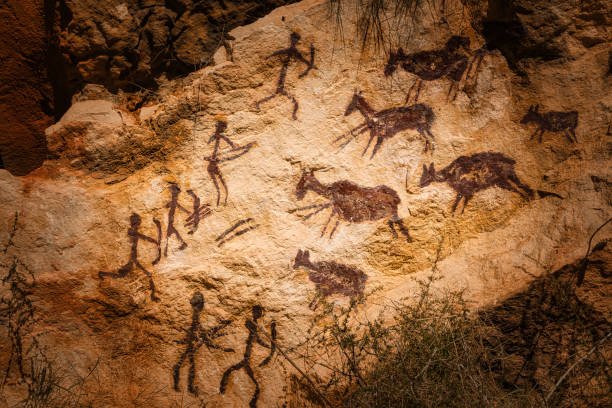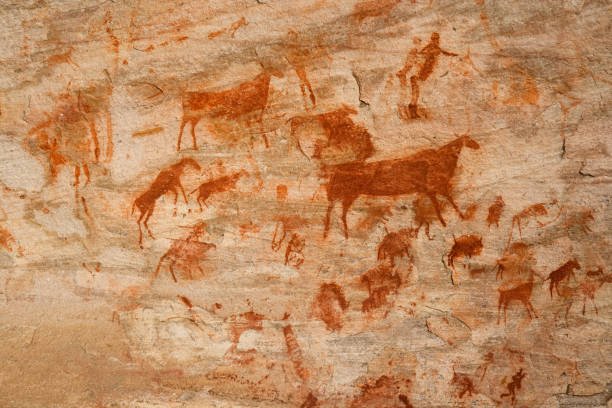Long before books, cities, and great civilizations, art was already beating on the walls of caves. Rock art represents the birth of human creativity and the ability to transform the surrounding world into visual symbols filled with meaning.
These prehistoric records, engraved or painted on stone, offer one of the earliest windows into symbolic thought. So, rock art is not merely a primitive form of communication—it is the genesis of the visual language that continues to shape our cultures today.
Rock art and The First Signs of Symbolic Consciousness
Rock art emerged around 40,000 years ago and is found across multiple regions worldwide. From the stunning cave paintings of Lascaux in France to the engravings in Serra da Capivara National Park in Brazil, these works reveal far more than depictions of animals or hunting. They point to a human mind capable of abstraction, storytelling, and registering beliefs.
According to The Mind in the Cave by David Lewis-Williams (2002), these images were not merely decorative. They were connected to trance states, shamanic rituals, and altered consciousness. This suggests that rock art already carried a spiritual dimension, linking humans to invisible natural forces.
Lewis-Williams also explains that the geometric patterns found in various caves may originate from inner visual phenomena, such as phosphenes (shapes we see with closed eyes). This connection between internal experiences and external representation marks a major cognitive leap in human evolution.
The Origin of Visual Language
Rock art did not only mark a symbolic shift. It established visual foundations that would influence all subsequent forms of artistic expression. The use of natural pigments such as ochre, charcoal, and hematite demonstrates a surprising level of technical knowledge for so-called “primitive” societies.

Moreover, the repetition of themes like animals, human hands, and hunting scenes shows the emergence of a collective visual vocabulary. These images acted as humanity’s first “visual archetypes.” In Man and His Symbols (1964), Carl Jung suggested that primitive symbols form the basis of the collective unconscious—and rock art is compelling evidence of that theory.
Institutions like the British Museum and UNESCO have emphasized the importance of rock art as a world heritage. On UNESCO’s website, one can find a list of caves and rock art sites recognized for their historical significance, such as the Altamira Cave in Spain and the Chauvet Cave in France. These places not only preserve ancestral art, but also fuel ongoing research into cultural origins.
The Presence of Rock Art Today
Despite being tens of thousands of years old, rock art still resonates with contemporary artists. Painters, sculptors, performers, and digital creators often draw from primitive signs as a way to reconnect with essential truths. The simplicity of the strokes, the symbolic power of animals, and the absence of linear perspective attract those seeking to challenge the rational and technological logic of modern art.
French artist Pierre Soulages, for example, acknowledged the strong influence of the Lascaux caves on his work. The “living darkness” of his black paintings (noir-lumière) echoes the interplay of light and shadow within ancient caves. In the digital world, projects like Google Arts & Culture – Chauvet Cave offer immersive 3D experiences, transporting viewers into prehistoric galleries—proof that rock art continues to inspire, educate, and move audiences.
Beyond the arts, rock art also intersects with neuroscience, psychology, and pedagogy. Studies like The Origins of Art and Symbolism, from the University of Oxford (2020), show that artistic activity is tied to brain regions responsible for empathy, visual memory, and decision-making. This supports the idea that art is not a luxury of civilization but a biological function of the human species.



